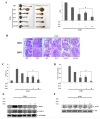N-Succinylaspartic-Acid-Conjugated Riluzole Is a Safe and Potent Colon-Targeted Prodrug of Riluzole against DNBS-Induced Rat Colitis
- PMID: 38004616
- PMCID: PMC10675528
- DOI: 10.3390/pharmaceutics15112638
N-Succinylaspartic-Acid-Conjugated Riluzole Is a Safe and Potent Colon-Targeted Prodrug of Riluzole against DNBS-Induced Rat Colitis
Abstract
In our previous study, riluzole azo-linked to salicylic acid (RAS) was prepared as a colon-targeted prodrug of riluzole (RLZ) to facilitate the repositioning of RLZ as an anticolitic drug. RAS is more effective against rat colitis than RLZ and sulfasalazine, currently used as an anti-inflammatory bowel disease drug. The aim of this study is to further improve colon specificity, anticolitic potency, and safety of RAS. N-succinylaspart-1-ylRLZ (SAR) and N-succinylglutam-1-ylRLZ (SGR) were synthesized and evaluated as a "me-better" colon-targeted prodrug of RLZ against rat colitis. SAR but not SGR was converted to RLZ in the cecal contents, whereas both conjugates remained intact in the small intestine. When comparing the colon specificity of SAR with that of RAS, the distribution coefficient and cell permeability of SAR were lower than those of RAS. In parallel, oral SAR delivered a greater amount of RLZ to the cecum of rats than oral RAS. In a DNBS-induced rat model of colitis, oral SAR mitigated colonic damage and inflammation and was more potent than oral RAS. Moreover, upon oral administration, SAR had a greater ability to limit the systemic absorption of RLZ than RAS, indicating a reduced risk of systemic side effects of SAR. Taken together, SAR may be a "me-better" colon-targeted prodrug of RLZ to improve the safety and anticolitic potency of RAS, an azo-type colon-targeted prodrug of RLZ.
Keywords: N-succinylated acidic amino acids; colitis; colon-targeted drug delivery; prodrug; riluzole.
Conflict of interest statement
The sponsors had no role in the design, execution, interpretation, or writing of the study.
Figures





Similar articles
-
A Colon-Targeted Prodrug of Riluzole Improves Therapeutic Effectiveness and Safety upon Drug Repositioning of Riluzole to an Anti-Colitic Drug.Mol Pharm. 2022 Nov 7;19(11):3784-3794. doi: 10.1021/acs.molpharmaceut.2c00255. Epub 2022 Aug 31. Mol Pharm. 2022. PMID: 36043999
-
Preparation and Evaluation of Colon-Targeted Prodrugs of the Microbial Metabolite 3-Indolepropionic Acid as an Anticolitic Agent.Mol Pharm. 2021 Apr 5;18(4):1730-1741. doi: 10.1021/acs.molpharmaceut.0c01228. Epub 2021 Mar 4. Mol Pharm. 2021. PMID: 33661643
-
Colon-Targeted β3-Adrenoceptor Agonist Mirabegron Enhances Anticolitic Potency of the Drug via Potentiating the Nrf2-HO-1 Pathway.Mol Pharm. 2025 May 5;22(5):2431-2445. doi: 10.1021/acs.molpharmaceut.4c01041. Epub 2025 Apr 17. Mol Pharm. 2025. PMID: 40241685
-
Pharmaceutical approaches to colon targeted drug delivery systems.J Pharm Pharm Sci. 2003 Jan-Apr;6(1):33-66. J Pharm Pharm Sci. 2003. PMID: 12753729 Review.
-
Mechanism of Neuroprotection Against Experimental Spinal Cord Injury by Riluzole or Methylprednisolone.Neurochem Res. 2019 Jan;44(1):200-213. doi: 10.1007/s11064-017-2459-6. Epub 2017 Dec 30. Neurochem Res. 2019. PMID: 29290040 Review.
References
Grants and funding
LinkOut - more resources
Full Text Sources
Miscellaneous

